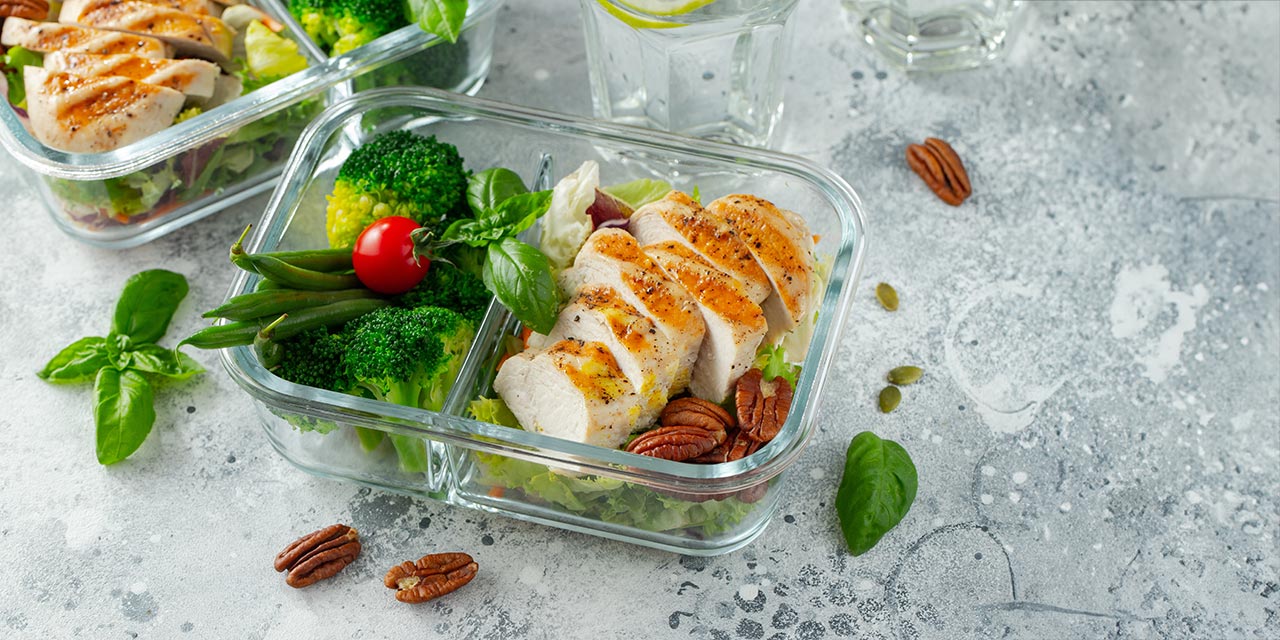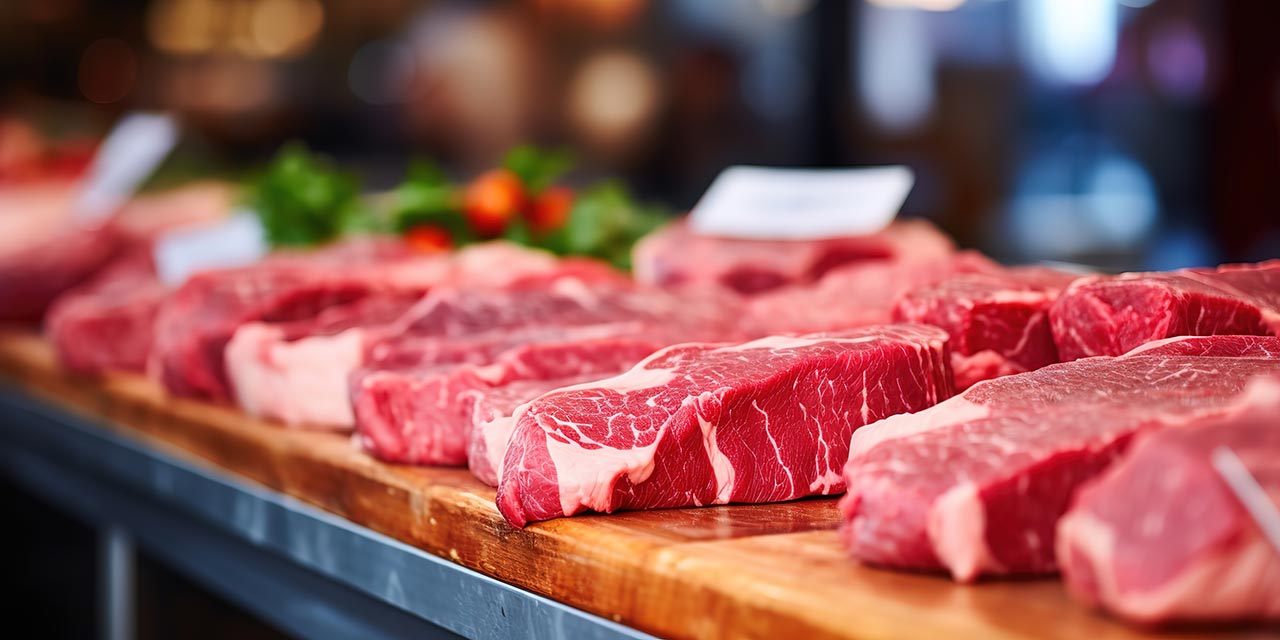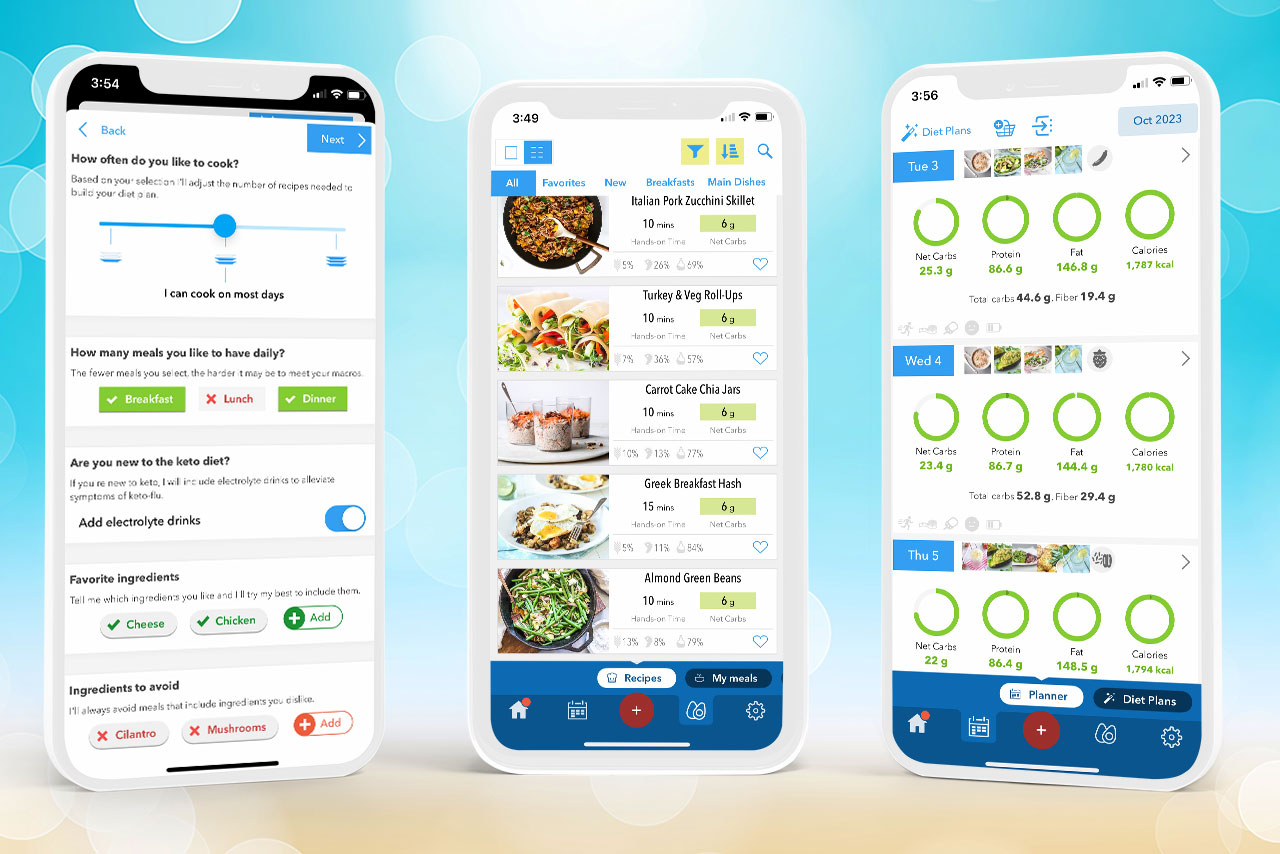Follow us 261.1k
Quick Summary tl;dr
Eating healthy on a budget is totally doable, especially when diving into the Low-Carb and Keto lifestyles. It's all about making informed choices and knowing where to look. While some might think these diets can be pricey, with the right strategies, you won't feel the pinch.
Budgeting isn't just about counting pennies. It's a tool that helps you eat mindfully, reduce food waste, get creative in the kitchen, and lean towards whole, unprocessed foods. By sticking to a budget, you're enhancing your low-carb journey, making it a sustainable and enjoyable lifestyle.
Planning is your best friend. Set a realistic budget, prioritize essential nutrients, and get familiar with local prices. Meal planning, especially with a focus on seasonal and local ingredients, can save you both time and money. Smart shopping, like buying in bulk and connecting with local farmers, can also lead to significant savings.
Understanding food labels is key. Organic, grass-fed foods often have a nutritional edge and are better for the planet. However, they can be pricier. It's all about finding a balance that suits your values and budget. Remember, not all "organic" or "grass-fed" labels are created equal.
Stock up on affordable low-carb staples. Proteins like eggs and canned fish, healthy fats like avocados and olive oil, and veggies like leafy greens and zucchini are both nutritious and wallet-friendly. And don't forget the power of DIY – making your own kitchen essentials can be both fun and cost-effective.
Lastly, embrace tips and tricks for added savings. From using a slow cooker and growing your own veggies to being smart with leftovers and reducing takeaways, every little change can lead to big savings. With a supportive community and the right tools, like the KetoDiet App, you're set for success.
In a nutshell, a low-carb lifestyle on a budget is not just a dream. With planning, creativity, and a sprinkle of determination, it's a delicious reality waiting for you to bite into!
Looking for a way to eat healthy without breaking the bank? You're in the right spot. This guide will help you explore the Low-Carb and Keto diets without stressing your budget. Whether you're already on the keto train or just starting out with low-carb, we've packed this guide with practical tips and shopping advice.
And keep an eye out for our next post – it'll be filled with budget-friendly recipes. Let's make healthy eating both easy and affordable!
The Economic Challenge: Common Misconceptions
Starting a low-carb or keto lifestyle can seem a bit challenging, especially when budgets are involved. The main difference between the two diets is how much you cut down on carbs and increase fats.
A low-carb diet involves eating fewer carbs and more proteins, fats, fruits, and vegetables. The keto diet is stricter, reducing carbs to get your body into a state called ketosis, where it efficiently burns fat for energy.
There’s a common belief that a low-carb (and especially keto) lifestyle is naturally more expensive due to the price of quality proteins, fats, and certain low-carb products. But it’s important to clarify this! While some low-carb items might be pricier, there are lots of affordable options available. With informed choices, a focus on whole foods, and some savvy budgeting, embracing a low-carb lifestyle won’t strain your wallet!
Benefits of Budgeting for Low-Carb Diets
Budgeting isn’t just about pinching pennies; it’s a powerful tool with perks that extend beyond your wallet. Here are some of the cool benefits of budgeting when you’re living the low-carb life:
- Mindful Eating: Keeping a budget helps you be more mindful of what you’re eating, putting the focus on nutritional value and portion sizes.
- Reduced Food Waste: When you plan your meals and shop with a budget in mind, you’re less likely to make unnecessary purchases and waste food.
- Creativity in the Kitchen: Sticking to a budget can spark your creativity in the kitchen, leading you to try new recipes and cooking techniques.
- Healthier Choices: Budgeting nudges you towards whole, unprocessed foods instead of pricier, processed low-carb alternatives.
By embracing budgeting, you’re not just saving money; you’re also enhancing your low-carb journey, making it a more sustainable and enjoyable way of life!

Planning and Budgeting
1. Setting Your Budget
Starting a low-carb lifestyle? First things first, let’s set a budget that’s both realistic and manageable. Here’s how you can do it:
- Calculate Daily Needs: There are online calculators and nutritionists out there to help you figure out your daily caloric and macronutrient needs. It all depends on things like age, gender, activity level, and health goals. Not sure how to start? Our app will calculate your ideal macros for you.
- Prioritize Essential Nutrients: Make sure your budget covers your protein, fat, and micronutrient needs. A balanced low-carb diet is all about nourishing your body with quality foods, not just cutting carbs. Not sure how to start? Our app will generate custom diet plans for you.
- Research Prices: Get to know the prices of low-carb staples around your local stores or online. This helps you set a realistic budget and spot where you can save some bucks.
- Set a Weekly or Monthly Budget: With your daily needs and price research in hand, work out a weekly or monthly budget. And hey, leave a little space for occasional treats or those unexpected expenses.
2. Meal Planning Strategies
Meal planning is your best buddy for keeping a low-carb lifestyle budget-friendly. Here are some strategies to kickstart your journey:
- Weekly Meal Prepping: Set aside some time each week to plan and prep your meals. It keeps you from those last-minute, often pricier, food buys and makes sure you’ve got nutritious meals ready to roll.
- Diverse and Flexible Menu: Mix it up with a variety of proteins, fats, and veggies to keep things interesting. Be flexible and swap ingredients based on what’s on sale or in season.
- Seasonal and Local Ingredients: Go for fruits and veggies that are in season and local. They’re usually fresher, tastier, and easier on the wallet.
- Batch Cooking and Freezing: Cook up big batches and freeze some for later. It’s a time-saver and lets you buy and cook in bulk, which can be cheaper.
3. Shopping Smart
Smart shopping is all about making informed and strategic choices to get the most bang for your buck. Here’s how:
- Buy in Bulk: Stock up on non-perishable low-carb staples like nuts, seeds, and oils. It’ll save you money in the long run.
- Find a Local Farmer: Connecting with local farmers can be a game-changer. It’s a great way to get fresh, quality produce, often at better prices than supermarkets. Plus, you’re supporting local businesses and reducing your carbon footprint. Check out local farmers' markets, farm shops, or community-supported agriculture programs in your area.
- Seasonal and Local Produce: Yep, seasonal and local is the way to go for affordable and fresh produce. Get to know what’s in season in your area and plan your meals around it.
- Utilize Discounts and Coupons: Keep an eye out for sales and discounts on your go-to low-carb products. Lots of stores and brands have loyalty programs and newsletters with exclusive deals. Plus, many stores offer delivery services with annual subscriptions that can save you both time and money.
- Compare Prices: Don’t hesitate to check prices at different stores and online. A little shopping around can sometimes lead to big savings.
By mixing and matching these planning, prepping, and shopping tips, you can enjoy a varied and nutritious low-carb diet without feeling the pinch in your pocket!
Organic, Grass-Fed vs. Non-Organic, Grain-Fed: Finding the Balance
Navigating the choice between organic, grass-fed and non-organic, grain-fed foods isn't always straightforward. It's a mix of considering what's nutritious, what's kind to the planet, how animals are treated, and what's gentle on your wallet.

Distinguishing Food Labels
Navigating the grocery aisles, you’ve probably seen labels like "organic," "free-range," "grass-fed," and more. They might seem confusing, but they’re key to understanding the quality and origin of what you’re buying. Let’s demystify these terms to make your shopping trips smoother!
- Organic: These products are grown or raised without synthetic pesticides, herbicides, or GMOs. Animals are raised without antibiotics or growth hormones. However, certification standards can vary by country and organization.
- Non-Organic: These products might be grown with synthetic chemicals and GMOs, and animals might be given antibiotics and growth hormones. Practices may vary depending on regional regulations.
- Grass-Fed: These animals primarily eat grass rather than grain-based feeds. Look for additional labels like “100% grass-fed” or “grass-finished” as the proportion of grass in the diet can vary.
- Pastured / Pasture-Raised: These animals are raised with access to the outdoors, fresh air, and sunlight, and often forage for a significant portion of their diet. However, the quality of the pasture can vary.
- Free-Range: These animals have some degree of outdoor access, but the specifics can vary significantly. Standards for free-range labeling can also differ widely by country and product type.
- Outdoor Reared: Typically used for pigs, this indicates they have been born and raised outdoors for a significant portion of their lives, but conditions can vary.
Remember, the definitions and standards for these terms can differ by country, region, and certifying body. For instance, “organic” certification by the USDA in the United States might not be the same as by the Soil Association in the United Kingdom. So, it’s a good idea to research specific labels in your country and reach out to producers or brands for more info when you can!
Organic vs. Non-Organic: The Nutrition, Ethics, and Cost Breakdown
When we talk about nutrition, organic, grass-fed foods usually have the edge. They're packed with more omega-3s, antioxidants, and vitamins, and they're lighter on saturated fats. Plus, you won't find antibiotics or hormones in them. On the flip side, non-organic, grain-fed foods tend to have more omega-6s and saturated fats. And depending on where you're shopping, they might come with a side of antibiotics and hormones.
Thinking about the planet and our furry and feathered friends? Organic, grass-fed is the way to go. These foods are often linked to farming that's better for the Earth and gives animals a decent life. But non-organic, grain-fed options can be a bit rougher on the environment, and sometimes the animals don't get the best deal.
And then there's the price tag. Organic, grass-fed foods usually cost a bit more, thanks to the better farming practices behind them. But if you're on a budget, non-organic, grain-fed options are often more wallet-friendly and you'll find them in most stores."
Finding the Compromise
Navigating a budget-friendly low-carb lifestyle means sometimes making compromises, especially when juggling health, values, and your wallet.
Prioritize Your Values: First up, think about what matters most to you. If you're on a tight budget, you might need to make some trade-offs. Is top-notch nutrition your main goal? Or are you more concerned about the environment, how animals are treated, or just keeping costs down? Figure out your priorities and let them guide your choices.
Fruits and Vegetables - Organic vs Non-organic: When it comes to fruits and veggies, maybe mix it up. Go organic for the stuff you eat a lot of and save by choosing non-organic for the rest. If you're wondering which ones to buy organic, the Dirty Dozen Plus List is a handy guide. For instance, none of these need to be organic: coconut products, avocados, onions, asparagus and sweet potatoes. Finally, prioritize organic for produce with thin, edible skins and for leafy greens. Most of the residue is in the skins, so if you can peel it off and discard, you won't have to worry too much. Read more in this guide: Should I Buy Organic Fruits and Vegetables?
Beef - Grass-fed vs Pastured/Grain-fed: For beef lovers, if the omega-3 rich grass-fed options are a bit steep, you can still make healthier choices with other meats by trimming off the fat where omega fats are concentrated. And remember, no matter how they're raised, most meats are a great source of protein and other nutrients. Read more in this guide: Should I Buy Organic, Grass-Fed, and Pastured Animal Products?
Pork - Outdoor-reared vs Factory-farmed: Now, let's talk pork. A lot of the pork in the US comes from big factory farms. These places can raise some eyebrows when it comes to how pigs are treated, the environment, and even workers' rights. If you can't afford outdoor-reared, it might be best to avoid it.
Fish - Wild vs Farmed: With fish, while organic varieties can be a safer bet against some nasties, wild-caught is still your best choice. Just keep an eye on where it's from to avoid high mercury levels and make sure it's sustainably fished. A note worth mentioning: When it comes to bivalves (clams, mussels, oysters and scallops), you don't have to buy those organic. Unlike other farmed fish and seafood, bivalves are not kept in ponds, nor are they fed with pesticide-rich corn and soy. Instead, they are kept in ocean water acting like filter-feeders. Read more in this guide: Complete Guide to Healthy and Sustainable Fish & Seafood.
Lastly, a quick tip: local and in-season produce is often fresher, better for the planet, and kinder to your pocket than the fancy imported organic stuff. And always be on the lookout for sales or bulk deals, especially for the pricier items. Finally, when you're shopping, check the labels and do a quick brand check. Not all "organic" or "grass-fed" labels are created equal.
Affordable Low-Carb Staples
Before diving into the list of affordable low-carb staples, it’s key to remember that prices and availability of food items can really VARY depending on where you are, when you buy and what affects the price. The options below are general suggestions, and we recommend comparing prices, exploring local markets, and considering regional alternatives to make the best choices for your area. Always go for value, nutrition, and freshness when picking your staples.
Proteins
Proteins are super important for building and repairing tissues, making enzymes, and supporting overall body functions. Eating enough protein will keep you full for longer and maintaining a healthy weight becomes easier. When you’re on a low-carb diet, mixing up your protein sources is crucial.

Here are some wallet-friendly options:
- Eggs: These are versatile, affordable, and packed with high-quality protein and essential vitamins and minerals. A true staple!
- Canned Fish: Tuna, salmon, mackerel, herring and sardines in a can are cost-effective, rich in omega-3s, convenient, and have a long shelf life. When choosing fish, always prioritize SMASH. When choosing salmon, the redder the better, so keep an eye on those sales.
- Poultry: Chicken and turkey are usually less pricey than red meat but are excellent protein sources. Go for whole birds or thighs for more bang for your buck.
- Ground Meat: Ground beef, pork, or turkey are often cheaper than whole cuts and are super versatile in dishes.
- Legumes (in moderation for low-carb, not strict keto diets): They’re higher in carbs, but lentils and chickpeas can be included in moderation if you’re on a more relaxed low-carb diet. One exception are peanuts which are low in carbs. For healthy low-carb swaps to legumes, check out this guide.
Fats
Healthy fats are key in a low-carb diet, giving you energy and supporting cell growth.

Here are some budget-friendly picks:
- Avocados: They’re a source of healthy fats, rich in fiber and potassium. Grab them on sale and in bulk when you can. Also note that as mentioned above, they don't have to be organic.
- Olive Oil: This heart-healthy fat is great for cooking and salads. Bigger bottles usually mean better value. Wondering if you need to go virgin? Check out this guide!
- Butter and Ghee: A cost-effective fat that adds flavor to dishes. Choose unsalted versions as they are more versatile. Ghee can be quite pricey so make your own, it's easy!
- Coconut Oil: It’s a healthy and versatile option and can be budget-friendly if you buy in bulk. It's great for high-temperature cooking and has a long shelf life. Even non-organic is a good choice, given the minimal use of pesticides in coconut farming.
- Seeds and Nuts: Sunflower seeds, flaxseeds, walnuts, pecans, sesame seeds, and almonds are nutritious and often cheaper in bulk. Many websites offer huge discounts on 2-4 pound bags. Best nuts to buy on sale? Macadamias or tahini - sesame paste.
Some oils last for a year or more (most saturated fats) while other last for just a few months (most PUFA). Some even need to be refrigerated (flaxseed oil). Keep that in mind when buying oils to avoid rancid oils. When oils get rancid, they don't have to smell but are damaging your health.
Vegetables
Veggies are your go-to for fiber, vitamins, and minerals.

Stick to low-carb options that offer great nutrition without straining your budget:
- Leafy Greens: Spinach (especially frozen), kale, and lettuce are nutrient-packed and super versatile.
- Zucchini: A great low-carb veggie that can sub in for pasta or be the base for lots of dishes.
- Cauliflower: A low-carb superstar, it’s super versatile in recipes like cauliflower rice, mash, and pizza crust.
- Broccoli: It’s nutritious whether it’s raw, steamed, or roasted.
- Cabbage: Budget-friendly and versatile in salads, soups, stews and stir-fries.
- Rutabaga and Turnip: Great options that are available throughout the year. These low-carb staples are perfect for making soups and stews as well as a healthier alternative to potato mash.
By mixing up these affordable proteins, fats, and veggies in your meals, you can keep your low-carb diet balanced and budget-friendly. Remember, prices and availability can vary, so adapt your shopping list as needed!
Top 10 Tips and Tricks for Further Savings
Living low-carb doesn’t have to mean emptying your wallet. There are plenty of savvy strategies to help you save even more while enjoying a nutritious and varied diet.

Here’s are our top 10 tips for healthy eating on a budget:
1. Grab a Slow Cooker
Thinking of a budget-friendly kitchen buddy? Say hello to the slow cooker (or a crockpot)! These nifty gadgets are not only affordable (you can snag one for as little as $15 on Amazon US or £15 on Amazon UK), but they're also a game-changer for your wallet in more ways than one. If you're willing to splurge a bit more, options like the Instant Pot come with extra features like pressure cooking and sautéing – perfect for when you're in a time crunch.
Here's the cool part: slow cookers are magic for those tougher, wallet-friendly meat cuts like brisket, chuck, or oxtails. Pop them in, and voilà – you've got yourself a hearty stew or a rich curry.
And if you're into saving energy (and who isn't?), slow cookers are your go-to. They're energy-efficient, often using less power than a traditional oven. Plus, you can toss in your meat and sides together, skipping the extra cooking steps. Talk about a win-win!
Looking for easy low-carb recipes to make in your slow cooker? Check out these blog favorites, and our Keto Slow cooker and One-Pot Meals cookbook!
2. Make Your Own Kitchen Essentials
Why buy when you can DIY? Making your own kitchen essentials is a fantastic way to save money, ensure quality, and add a personal touch to your meals.
Ready to get started? Check out even more easy-to-follow recipes for your kitchen essentials and elevate your low-carb meals!
3. Grow Your Own Veggies and Herbs
Start a small garden in your backyard, balcony, or even indoors. Easy-to-grow veggies like lettuce, spinach, and tomatoes, or herbs like parsley, rosemary and basil, can significantly cut your grocery bills, and there’s nothing like fresh, organic vegetables and herbs right from your garden!
4. Saving Money? Choose Frozen Over Fresh
Frozen berries and vegetables are cheaper than fresh, unless they are in season. Frozen berries work in most low-carb recipes, even sprinkled over your breakfast granola! Frozen veggies are better value for money and they are convenient as they cook faster.
Plus you can make the most of seasonal fruits and veggies by canning, pickling, or dehydrating them. Freezing leftovers and bulk buys lets you enjoy out-of-season produce without the added cost.
5. Get Creative with Leftovers
Don't let yesterday's meals sit forgotten in the fridge. Repurpose them into exciting new dishes. That rotisserie chicken from dinner can be shredded into a refreshing salad for lunch. Vegetables that are nearing expiration or looking a bit wilted? They're perfect for hearty soups and stews.
By giving leftovers a new life, you not only reduce food waste but also stretch your meals further without digging deeper into your pocket. Embrace the art of reinvention and make the most of every ingredient.
6. Snack or Not to Snack?
Snacks can easily add up, not just in terms of calories, but also in terms of money. If possible avoid snacking and make sure your meals are satisfying enough so cravings don't take over. Pay extra attention to protein, as eating enough protein will keep hunger at bay.
When you do need to snack bur you're on a budget, whip up your own low-carb snacks like roasted nuts and cheese crisps. Our Guide to Low-Carb Crackers and Chips includes plenty of delicious snacks you can make at home!
7. Shop in Season and Look for Sales
Buying fruits and veggies when they're in season is a smart move. They're often cheaper, taste better, and are at their nutritional peak. Plus, stores often have sales on seasonal items, so you can save even more. If you spot a good deal, consider buying extra to freeze for later. This way, you can enjoy your favorite produce even when it's out of season, without the added cost.
8. Join a Community Garden or CSA
Get involved in a community garden or a Community Supported Agriculture (CSA) program. They offer access to fresh, locally grown produce often at a lower cost than stores.
9. Keep It Simple with Whole Foods
Embracing basic, whole foods like eggs, meat, and veggies isn't just a win for your health—it's also kinder to your wallet. Those specialty low-carb flours, sweeteners, and snack bars can quickly rack up the costs.
And remember, while they're convenient, pre-chopped veggies and pre-shredded cheese usually come with a higher price tag. So, think simple and save!
10. Rethink Those Takeaways
It might seem obvious, but it's easy to overlook how those takeaway meals and drinks can chip away at your wallet. Even that daily morning coffee can tally up over the month. So, before you grab that to-go bag or cup, consider the bigger picture and how much you could save by making a few changes.
By embracing these strategies, you can make the most of your budget, cut down on waste, and explore a variety of low-carb foods without compromising on quality or flavor!

Staying in Your Budget: Overcoming Challenges
Starting a budget-friendly low-carb lifestyle can have its ups and downs, but with the right tools and a sprinkle of support, you can totally rock it!
- Stay Motivated: Keeping your spirits high is crucial! Joining our KetoDiet Support Group is a great way to find encouragement and a sense of community. It’s a cozy spot to ask questions, share your journey, and get inspired by fellow low-carb enthusiasts.
- Adjust and Re-evaluate Your Budget: Life changes, and so should your budget. Regularly tweaking your budget ensures it matches your dietary needs, lifestyle shifts, and any changes in your finances. Being flexible helps you handle unexpected expenses and keep your low-carb lifestyle rolling smoothly.
- Make the Most of the KetoDiet App: Craving a treasure trove of thousands of trialed and tested recipes? We've got you covered. And if you're keen on aligning every bite with your unique macros, craft endless custom diet plans. Want to customize meals in your diet plans to fit your budget? Choose or exclude ingredients with ease. Curious? Dive in and explore all these perks with our free trial!

Conclusion
Pulling off a low-carb lifestyle on a budget? Totally doable! With a bit of planning, a sprinkle of creativity, and some savvy strategies, you’re all set. Focus on meal planning, smart shopping, and clever budgeting. Try your hand at growing veggies, preserving food, and turning leftovers into tasty new meals. Stay in the know about food choices and labels, join our supportive community, and let handy tools like the KetoDiet App keep you motivated and on the right path. Every little change you make is a step towards a healthier, more sustainable you!
We’re firm believers in enjoying all the goodness of a low-carb lifestyle, no matter your budget. Sure, there might be a few bumps along the way, but with a supportive community by your side and the sweet rewards waiting, it’s all worth it!
Got any budget-friendly low-carb tips, tricks, or recipes up your sleeve? We’re all ears! Share your insights with our community – your wisdom might be the perfect nudge someone needs to start their low-carb adventure!
Do you like this post? Share it with your friends!
Let us know what you think, rate this post!
